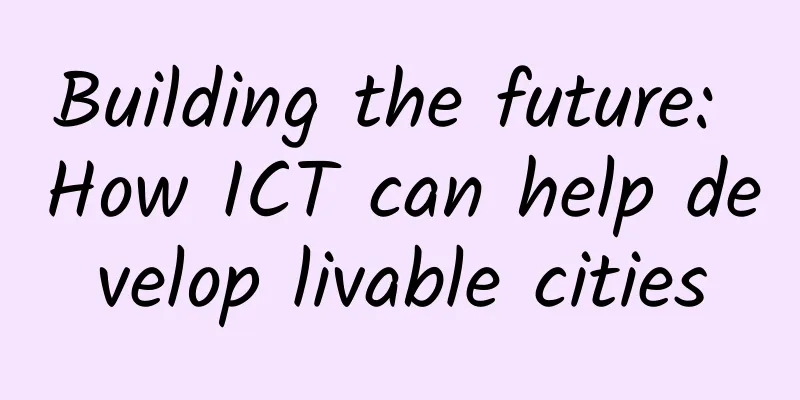2018 Trend Forecast and Future Outlook

|
1. About safety 1. Connected cars are more than just cars According to market analysis firm IHS Markit, global sales of connected cars will increase from 24 million in 2015 to 72.5 million by 2023. This means that in just eight years, nearly 69% of passenger cars sold will be connected to the outside world for data exchange, turning the car into an advanced network. By 2018, the car will transform from a mode of transportation to an interconnected information hub. In 2018, as concerns about attacks on connected car systems grow, the term "attack surface" will extend to the vehicle. Concerns about catastrophic attacks on the entire vehicle will evolve into general fears of attacks on individual accounts, such as automatic toll collection systems, navigation history, and vehicle monitoring systems. As automakers work to address these growing risks, continuous performance monitoring and system verification will become more important in 2018.
2. IoT risks are real As people become more and more dependent on the Internet of Things, hundreds or even thousands of connected devices will be vulnerable to attack and become botnets with devastating effects. These growing risks and generally insufficient Wi-Fi protections will lead to an endless stream of vulnerabilities that are likely to be exploited maliciously. The expanded attack surface introduces new risks into your corporate network. If you work remotely on an unprotected public network, you put your entire organization at risk, with hackers stealing your data or unknowingly turning your device into part of a botnet. 3. Data privacy will become a new technical concern Concerns about data privacy have reached new heights as data-driven businesses worry about complying with the EU’s General Data Protection Regulation (GDPR), which will take effect on May 25, 2018. As we move towards the cloud, the internet is becoming ubiquitous, and protecting the privacy of personal data is a complex task. Using a public cloud moves data from your internal data center to the cloud service provider. Cyber breaches and government intervention have made the consequences of misusing personal data well known. Years of using weak passwords and handling personal information have left us with no control over our data. The problem is considered critical. While we can no longer keep a firm grip on our data, we can still ask data controllers (like Equifax) to do more to ensure its security. 2018 will finally be the year we make data privacy a priority in our lives. 4. “Employee issues” will be your biggest risk When it comes to security, the current technology tools are no longer the problem. Significant advances in firewalls, web application security, and network protection solutions have moved the industry forward, but employee behavior has not. The idea that if I click on a malicious link or leave my computer accessible to an unattended device, the consequences will be “taken care of by IT” still exist. If employees don’t take security seriously, cyberattacks will soon be able to penetrate your network. And employees are likely to still believe that the responsibility for identifying and preventing cyberattacks and phishing lies with the back-office security team. As a result, intrusions will continue to escalate in 2018. 2. About Visibility 1. Edge computing makes cloud computing even better As we bid farewell to 2017, cloud has become the mainstream IT model, and organizations have realized that they need better cloud security and performance management solutions. The "cloud cleaning" solutions originally designed for data centers are no longer up to the task. In order to add value to the cloud, a distributed, decentralized modern computing form has emerged, and this new model is called edge computing. Edge computing improves the overall efficiency of the cloud by bringing computing, storage, and networking technology resources closer to users. We will see more companies use edge design patterns in their infrastructure architectures to better take advantage of the cloud without sacrificing speed or reliability. Even if it can't be done in the cloud, adding edge computing elements will return processing power to the enterprise network, allowing work to be completed more quickly. 2. 5G will bring new market opportunities, new capabilities and new businesses As 5G opens a new era of connectivity, it will arrive faster than we expect and will trigger many disruptions. Even in its early stages, investments in 5G are already extensive and huge, with many operators and enterprise organizations already investing resources in testing new 5G devices, technologies, and application scenarios. In fact, according to a recent survey by Ixia, 96% of large technology companies intend to adopt 5G, and 83% of large technology companies will deploy 5G solutions within the next 24 months. The transition from 4G to 5G will bring a multitude of business opportunities across multiple verticals. The technology will ultimately make connectivity easier and usher in an unparalleled new wave of technology and growth for many organizations. 3. Welcome our new robot overlords Apps used to be king. From mobile apps to web apps, there was an “app” for every task! Now, Apple, Amazon, Google, Facebook and many other companies are betting on a robot-driven future. One of the most underrated benefits of bots is that they make networking simpler. No longer do tasks have to be sent to hundreds of different applications for simple subtasks. Instead, the bot will do it all. It will be much easier to find the point of failure in external connections, and IT departments will be better able to keep the business up and running. 4. Public IT infrastructure will become your job Your data center will no longer be confined to your office; in fact, it may be more than 100 miles away from your nearest main office, not to mention those remote branch offices. SOHO workers and business travelers will make up an increasing proportion of the workforce - which means that daily work will be completed on servers and networks outside the corporate organization. We have seen the consequences of large-scale events such as the AWS outage in March 2017, when an outage in an Amazon cloud data center caused outages for several large online services, including Quora, Business Insider, and parts of Slack. Many organizations have moved to a hyperscale cloud model and rely on providers to maintain the required availability. IT teams must establish greater control over cloud data traffic to prevent any security breaches and protect customer experience and employee productivity. As cloud becomes the dominant mode of communication and processing, they will need to establish greater cloud visibility. 5. Artificial intelligence ultimately reflects the value of software-defined everything Artificial intelligence (AI) is undoubtedly one of the top technology buzzwords of the year. From security teams to HR departments, AI has significantly advanced the way businesses handle all kinds of data. Adoption and innovation of this technology is not going to slow down anytime soon. The cyberspace will be the next big area for AI investment. Software-defined everything, cloud technology, and globalization have allowed IT teams to completely abandon the manual network maintenance of the past. Innovative providers are now embedding machine learning and artificial intelligence into network platforms to effectively customize network performance on demand to meet the requirements of the services and applications carried by the network. As this trend continues, enterprises will have to maintain the same packet-level visibility as hardware-based networks to take full advantage of the possibilities. |
>>: Software Defined Data Center (SDDC) Architecture for Beginners
Recommend
How edge computing will benefit from 5G technology
With the development of 5G technology, more and m...
Shocking! 4G short videos exploded, 5G will eliminate pictures and texts!
The 2G era is an era of text messages flying ever...
BuyVM adds new unlocked streaming VPS hosts, 1Gbps unlimited traffic from $5/month
BuyVM has launched the China Special - STREAM RYZ...
When is the right time to buy Wi-Fi 6E?
Despite the indisputable advantages of operating ...
Tencent Cloud Lighthouse Care, help you get up to 200 yuan in coupons
Tencent Cloud recently launched a lightweight wor...
Understand the latest development trends of the 5G terminal industry in one article
[[382434]] Since the Ministry of Industry and Inf...
VirMach: supports monthly payment of KVM architecture starting from $1.25/month, supports Alipay, and has 11 computer rooms to choose from
It has been a long time since I shared informatio...
Comparison of IT industry salaries in 2021
There is a popular saying among job-hopping peopl...
Let's talk about the TCP/IP protocol processing flow
When a user uses a command with the TCP/IP appli...
What exactly is the cache technology that supports high concurrency?
Author | Jin Peng, Unit: China Mobile Smart Home ...
What is the “correct way to open” the university cloud desktop?
Colleges and universities have always been an imp...
Huawei Cloud's Zheng Yelai: Diversified computing power drives application innovation
As science and technology develops at an increasi...
A dream combination: IoT and edge computing
The proliferation of Internet of Things (IoT) dev...
[Black Friday] DediPath: Dedicated servers in multiple data centers in San Jose/Los Angeles/New York/Dallas starting from $39/month
A few days ago, we shared the Black Friday VPS pr...
What is Wi-Fi 7?
The Wireless Broadband Alliance (WBA) announced i...









